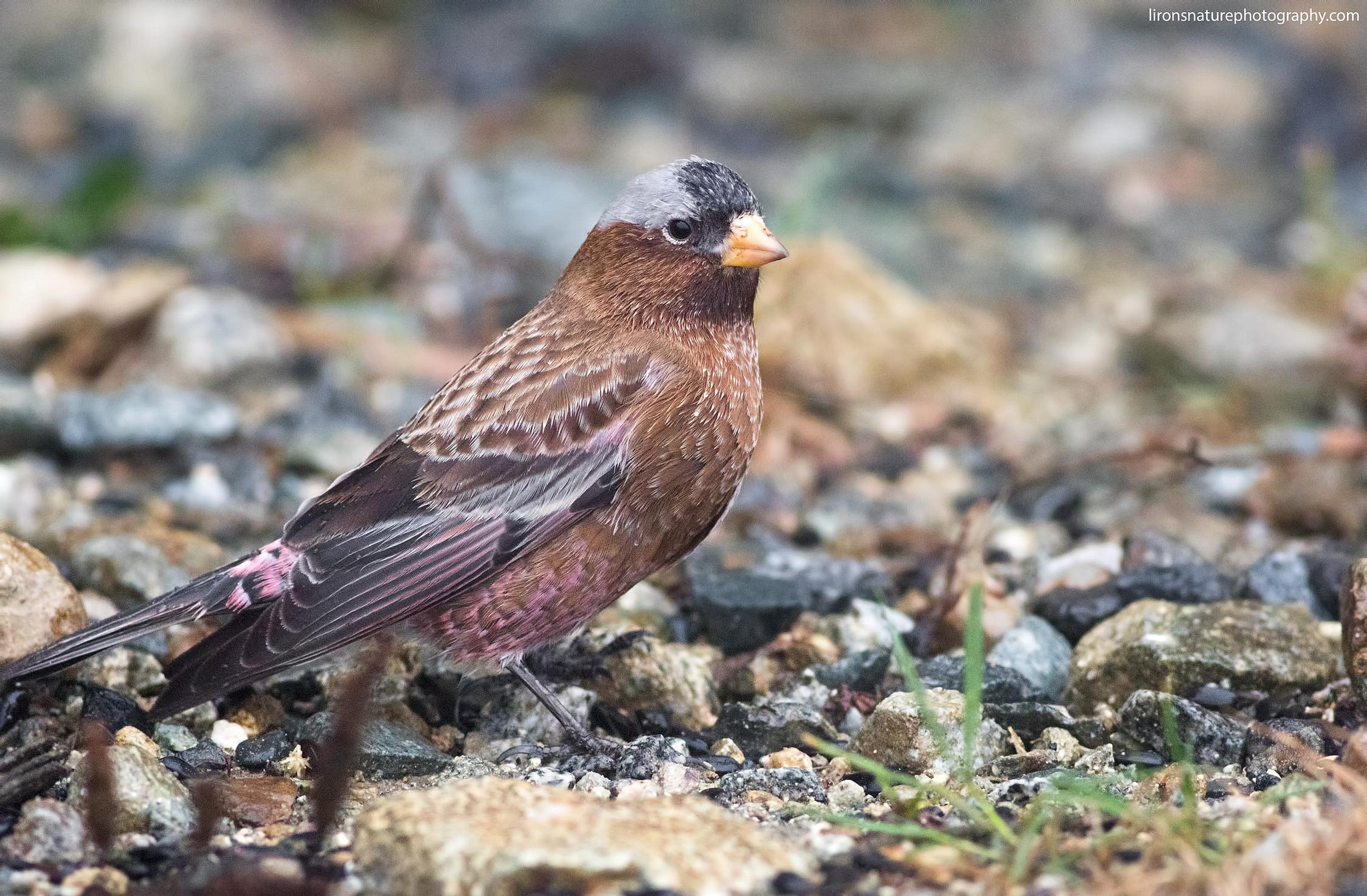Author Dr. Lynne Spriggs O’Connor: A few years ago, between our daily outings to check on livestock around the ranch, I decided to do a little research on our favorite winter finches. A thirteen-page article published in 1910 appeared in a publication called The Condor. It documents a remarkable ascent to a summit at 9,984’ by two men – Milton Ray and Henry W. Carriger – who specialized in ornithology and oology (the study of bird nest, eggs, and breeding behavior). Their mission was the discovery of hidden nests and eggs of the elusive Gray-crowned Rosy-Finch or Leucosticte.
After baffling scores of searching oologists during the long period since the bird was first described by Swainson in 1831, the nest and eggs of the Gray-Crowned Leucosticte have at last been brought to light. The place of discovery is Pyramid Peak, a lofty mountain of the great Sierran chain, in the eastern portion of Eldorado County, California…
…Having previously ascended Pyramid Peak, however, on July 5, 1902, and having spent some hours searching for the homes of those finches of cloudland, the prospects to me did not seem very promising….

Dr. Lynne Spriggs O’Connor
The expedition’s ascent in 1910 is described in thrilling detail. At last, they reach the top.
Now, from the summit, we notice some half-dozen Leucostictes flying among the rocks and on the snow-drifts below, on the north and northeast side of the peak. Desiring to see if more birds could not be brought to view we started several boulders down the mountain side and discharged one of our firearms a number of times. This method proved successful; for the uproar brought forth the largest gathering of Leucostictes I had ever seen, a conservative estimate being twenty birds. And now, although I had previously cautioned him of the danger, Carriger in his enthusiasm hurried down to where the flock was assembled and in doing so picked out a treacherous route which led to where a sheer wall drops some 2,000 feet. For an instant he lost his footing among the loose boulders and narrowly escaped being dashed over the precipice. But this narrow escape was soon forgotten when we reached the ledge on the edge of the chasm; for never before was enjoyed such intimacy with perhaps the rarest of all our breeding birds.
This early account is dramatic. An expedition of men scaling dangerously high peaks at a time when the sport of mountaineering was just gaining momentum. A heroic quest to be the first ever to see these high-altitude nests. This is an adventure I’m not likely to experience first-hand. Yet in their observations and descriptions of these birds, I find direct corollaries in what I can observe from our kitchen window today, as some eighty GCRFs attempt to feed in very high winds.
… The Rosy Finch, as some would prefer to call the Leucosticte, is ever active either on foot or wing, among the rocks, along the cliffs or while feeding on stranded insects upon the snow. Endowed by nature to combat the fierce gales which prevail almost continually in these high altitudes, this bird possesses great power in its broad stretch of wing. The flight is rapid, in long, graceful, sweeping curves, and the birds mount hundreds of feet even against strong head winds without much apparent effort.
I later discovered a quieter and far more personal account. In a publication from 1903 called The Birds of Fergus County, Montana, Ms. P.M. Silloway published her notes on the Gray-crowned Leucosticte. Ms. Silloway lived in Lewistown, Montana, which surprised me. Lewistown is only 59 miles away!
[The Gray-crowned Rosy-Finch] is a regular winter resident at Lewistown, where it is known as the “brown snowbird.” …[They are] gregarious, moving about daily in flocks of varying size, usually scattering about town in smaller troops until severe weather, when most of the troops unite into one large flock, often containing from two to three hundred individuals.
In 1899, I first noted the leucostictes on October 30, when a troop of fifteen was seen gleaning on a vacant lot on Main Street, Lewistown. When disturbed, they arose with sharp, metallic, scolding notes, keeping together and flying away in irregular, undulating, capricious flight.
A kindred soul! A fellow writer/birder from a small town near our ranch, having similar experiences of this familiar bird during winter months. More than one hundred years ago, this woman in a neighboring town remarked upon the same characteristics I appreciate today.
By November 16, the number of the flock had increased to about sixty. They fed near the school building, and were quite fearless and friendly, an individual frequently alighting withing six feet of me.
These two early accounts made me wonder: does anyone know if Gray-crowned Rosy-Finches still nest on Pyramid Peak in California? Do they still visit main street Lewistown each winter? Recently I was told that Black Rosy Finches nest in the Little Belt Mountain range, about 70-90 minutes south of us near the town of Neihart, and in the Big Belt Mountains near Helena, Montana. Where else – in Montana, and beyond – do these birds live today?
For decades it has been just my husband and I enjoying the wonders of our large (up to 450-bird) winter flocks of Gray-crowned Rosy-Finches. In the isolated mountain valley where we live, I’ve learned a bit more about these birds through research online. This week, I’ve begun documenting our direct experiences for The Finch Research Network’s recently launched Rosy-Finch Project. What an exciting opportunity for a novice like me to both share and learn more! I’m grateful for this growing platform where everyone can collaborate to help connect the dots and expand our contemporary understanding of a relatively secretive species that has been documented and admired since at least 1831.
Cover Photo Liron Gertsman
Dr. Lynne Spriggs O’Connor is a writer and rancher. She has written several blogs here for FiRN named Finches of Cloudland, and her upcoming memoir is titled Elk Love: A Montana Memoir, where she writes about her special relationship with the Rosy-Finches that have visited her and her husband over the years.
FiRN is a nonprofit, and has been granted 501c3 status. FiRN is committed to researching and protecting these birds and other threatened finch species like the Evening Grosbeak and Rosy-finches, and if you have been enjoying all the blogs and identifying of Red Crossbill call types, redpoll subspecies and green morph Pine Siskins FiRN has helped with, please think about supporting our efforts and making a small donation at the donate link below.


Fore more about Finches of Cloudland and the Rosy-Finch Project, read below:

